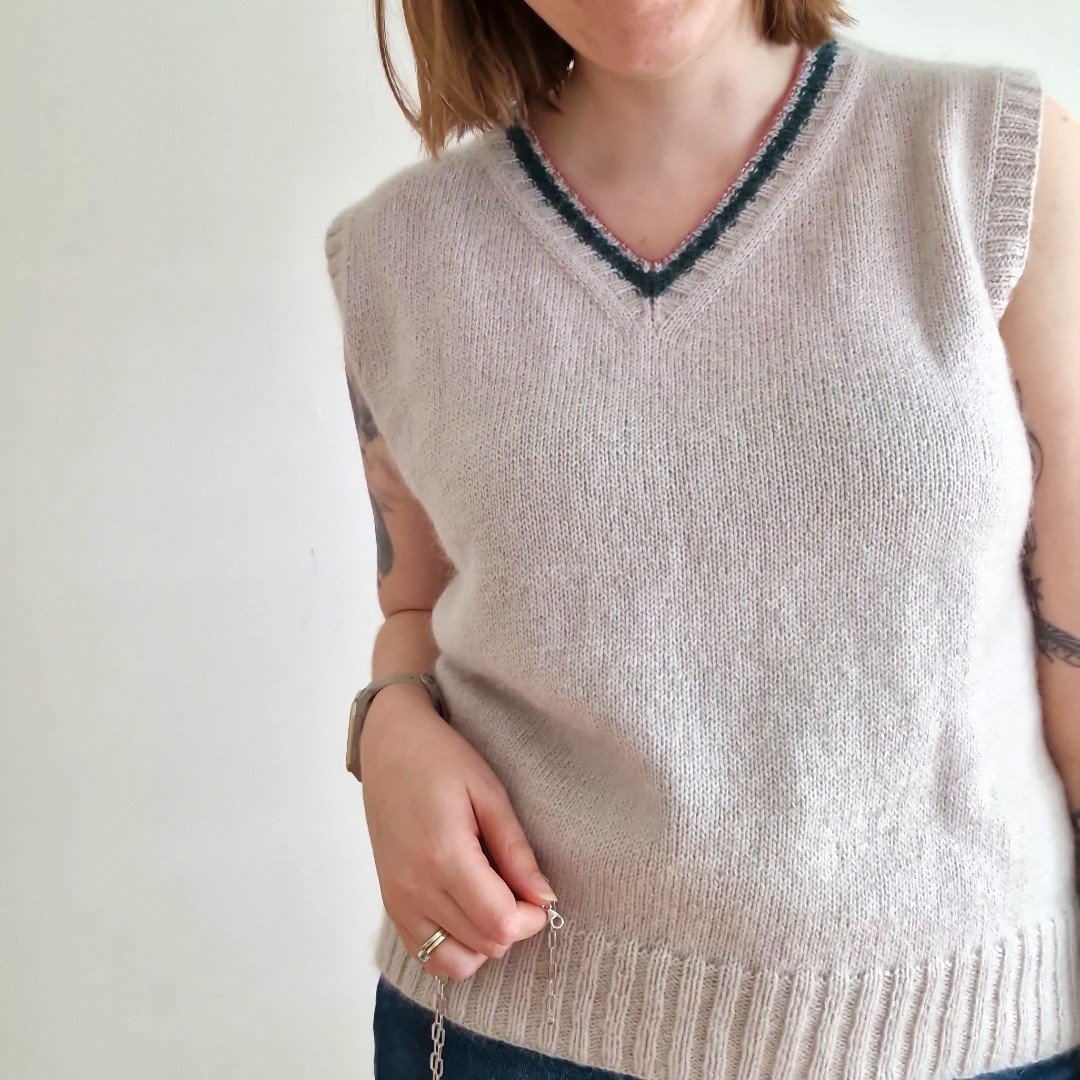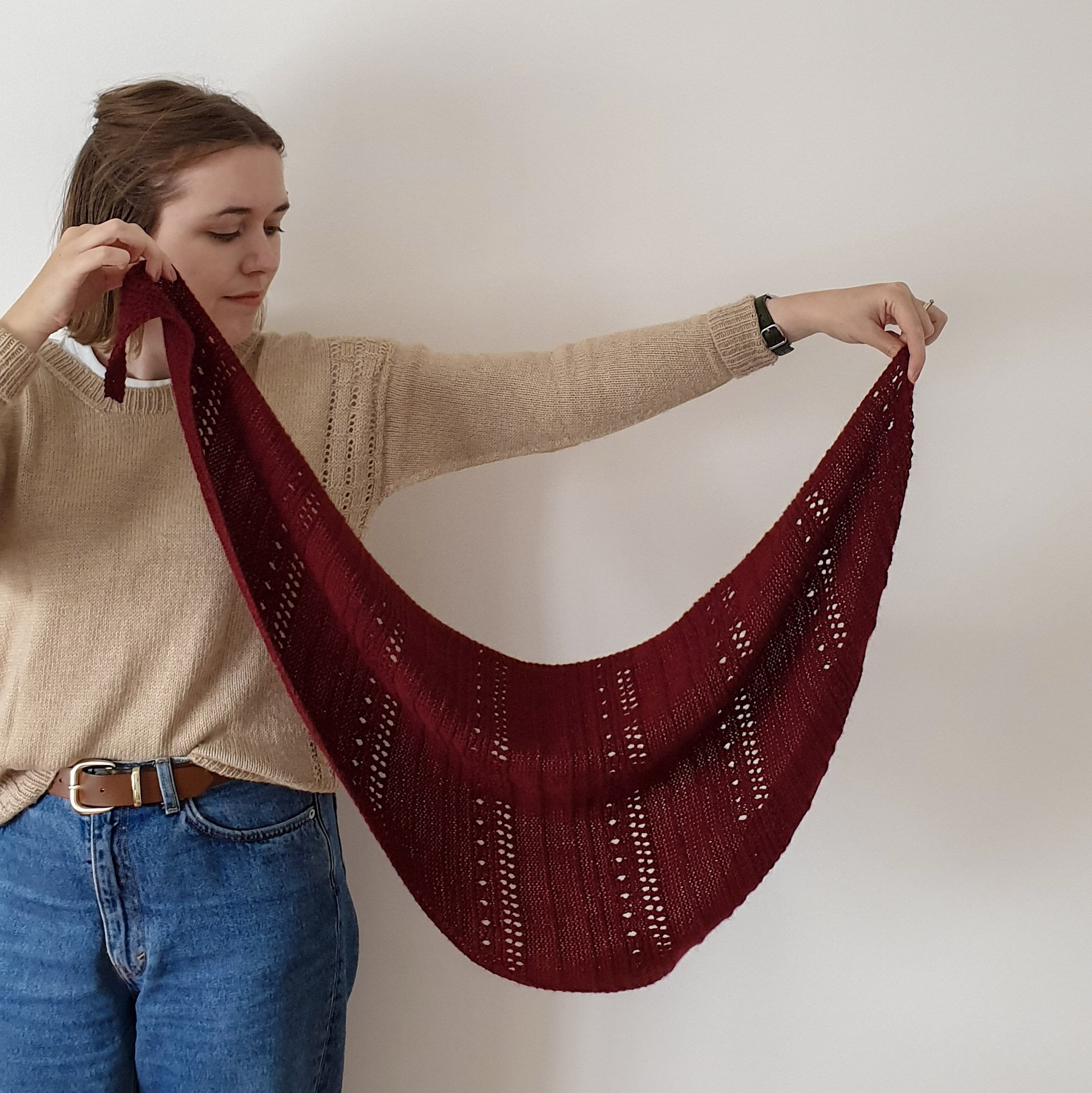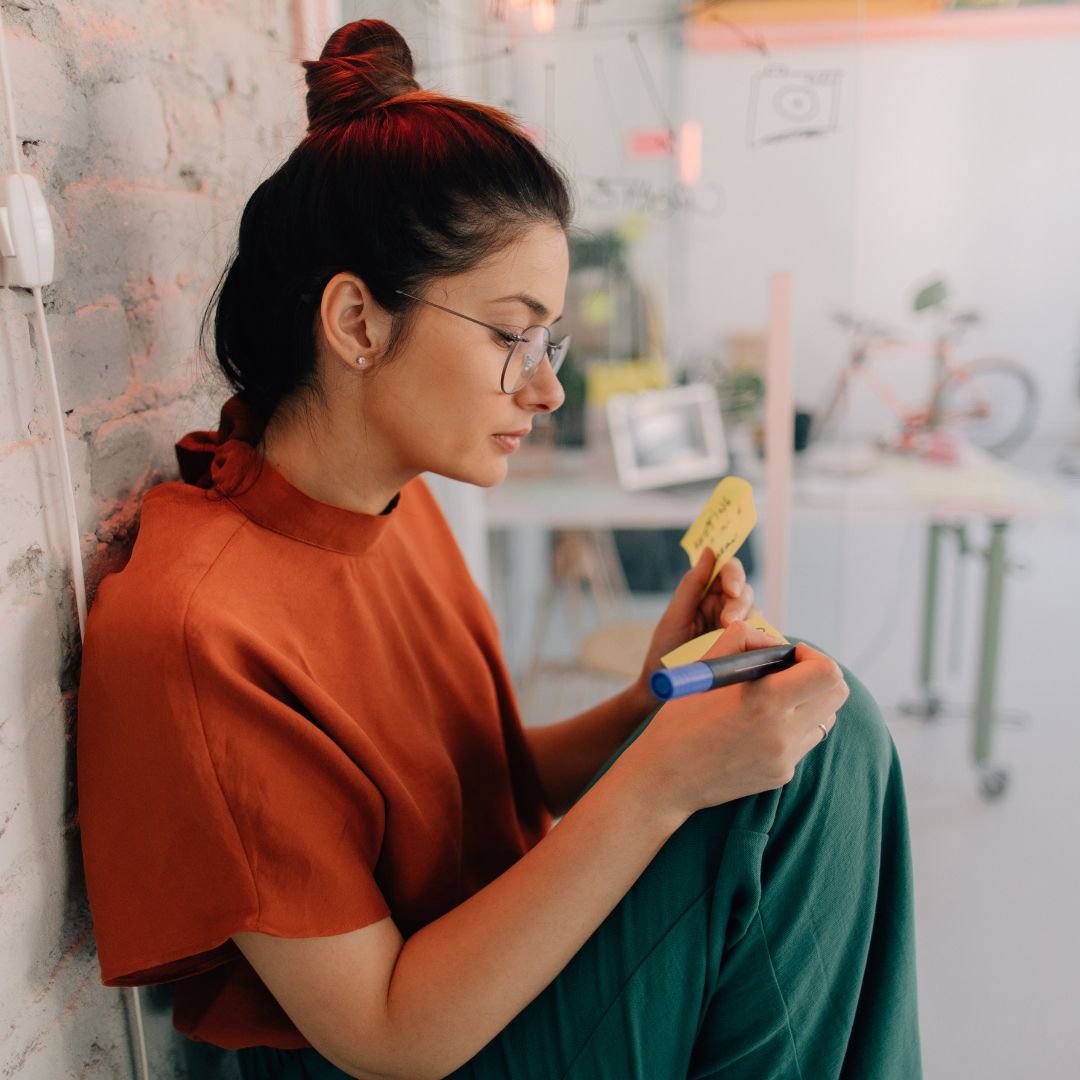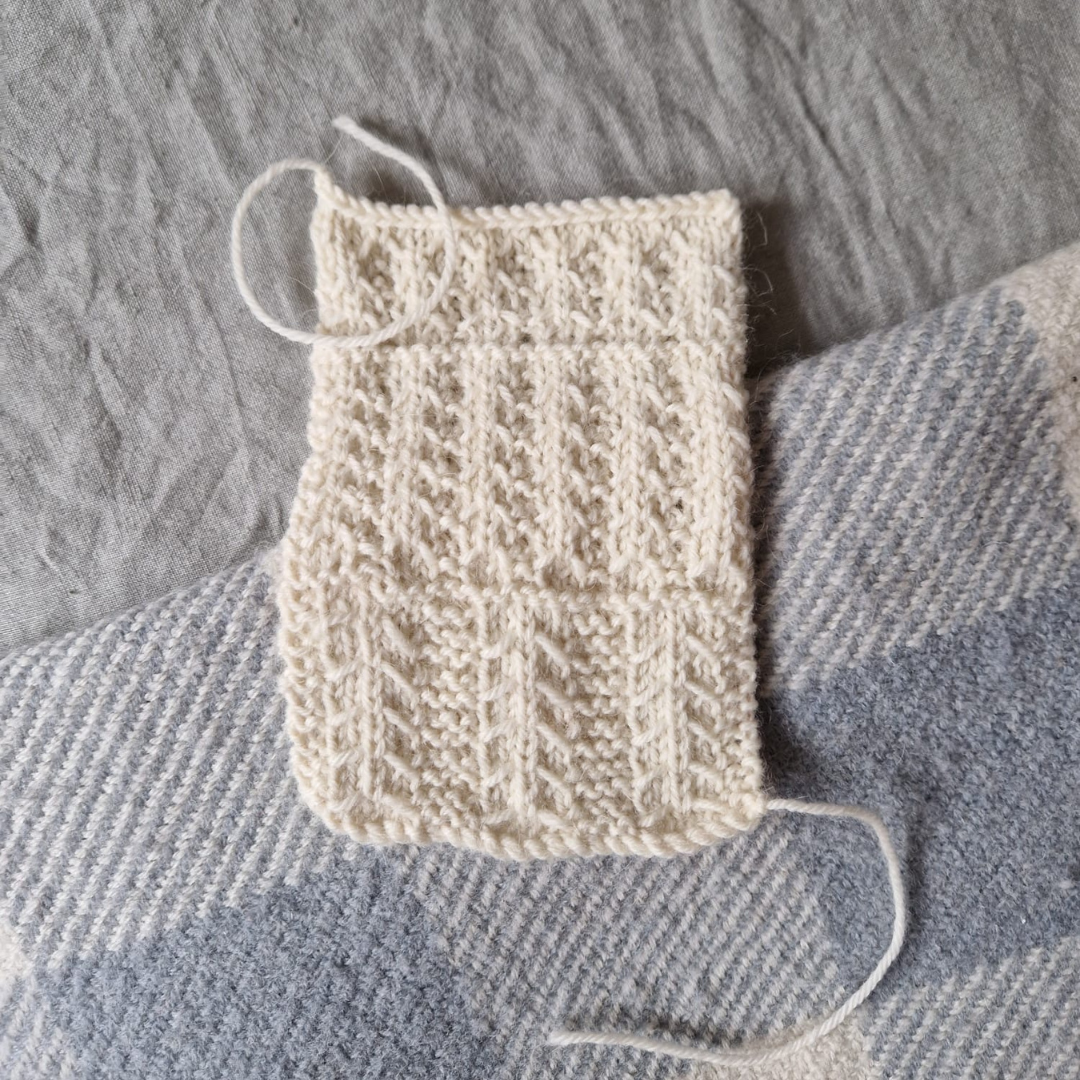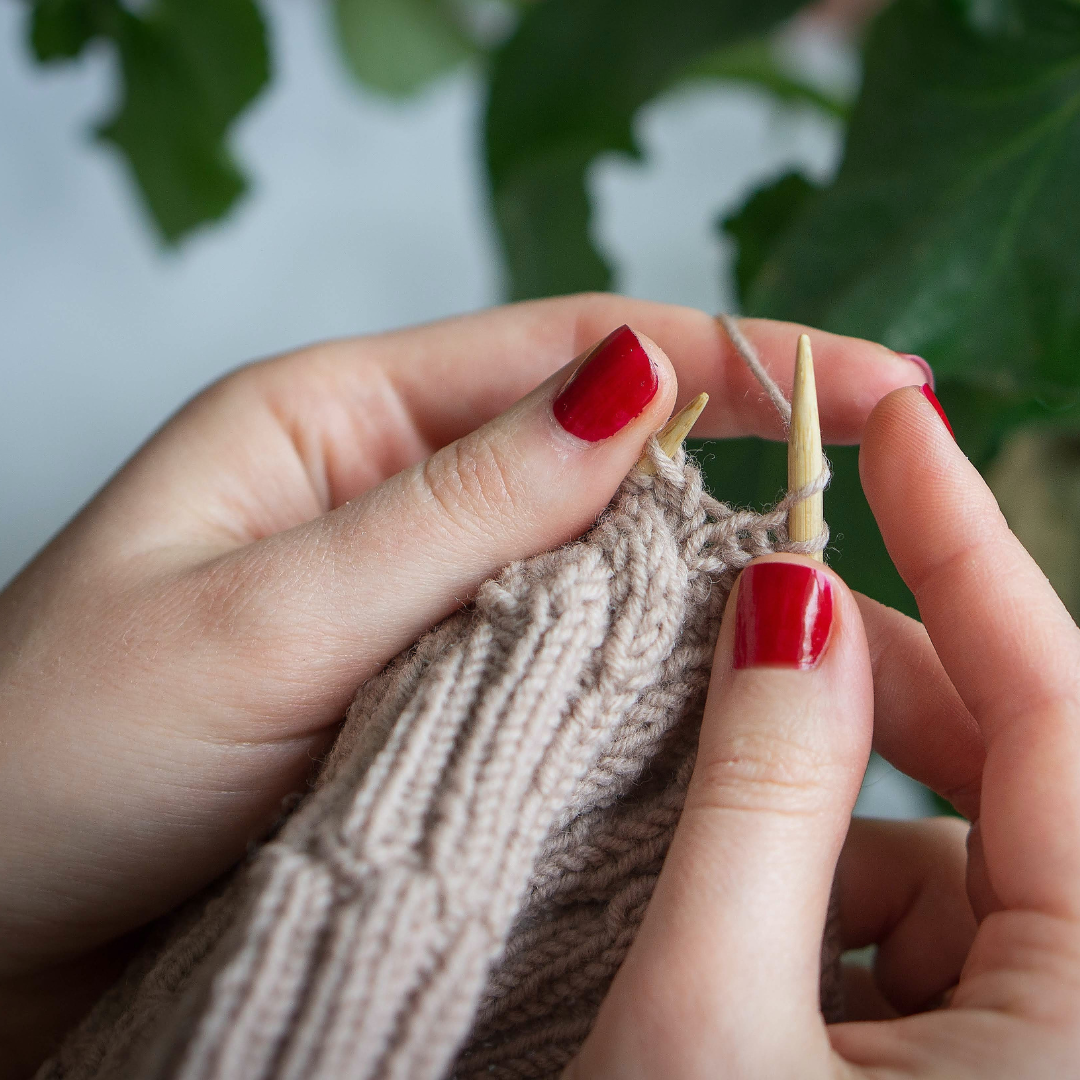How to Put Your Own Spin on Runway Trends
London Fashion Week has just finished, and, as always, there’s plenty to think about. From bold colours to really playful shapes, the runway was packed with ideas that could easily spark something new in your knitting.
But what do you actually do with that inspiration? The fun part isn’t copying what you see—it’s taking those trends and making them your own.
In this post, I will show you how to do just that. We’ll take a look at some of my favourite SS25 knitwear pieces from Simone Rocha, J.W. Anderson, Matty Bovan, and Apujan.
I’ll walk you through how to translate those looks into your designs, giving them your own twist. Whether it’s texture, shape, or colour that catches your eye, this is all about creating something that feels like you—not just following trends for the sake of it.
Image description: Photo of women walking in a fashion show with a text overlay saying, How to Put Your Own Spin on Runway Trends.
Step 1: Spotting Trends that Speak to You
With London Fashion Week fresh in our minds, let’s start by identifying what catches your eye. For me, it was Simone Rocha’s collection—specifically those tinsel-like, fuzzy knits. I never thought I’d be into sparkly, tinsel knits, but here we are!
Simone Rocha London Fashion Week
It instantly took me back to a pink, sparkly cardigan I begged my mum to buy when I was a kid. I wore that thing to death until I grew out of it, and it was passed on to a neighbour!
The mix of sparkle and fluff in Rocha’s pieces brought all those memories flooding back, and it’s the texture that really grabbed my attention this time.
What about you?
Take a look at runway images from recent fashion weeks—Vogue, Pinterest, and Instagram are great places to start. Search hashtags like #LFW or head to fashion websites to find all the highlights.
Once you’ve found a few pieces, think about what stands out to you. Is it the texture, the shape, or maybe the colours? Write down three things that catch your eye—it could be the sparkle and fuzz like Rocha’s or something totally different.
Remember: The goal isn’t to copy. You’re just finding what speaks to you, then taking it in your own direction.
Step 2: Sketch Your Ideas
Now that you’ve found some runway looks that inspire you, it’s time to start sketching.
Take J.W. Anderson’s collection, for example. What stood out to me were those playful, graphic loops of blue and yellow—they had a real pop art vibe. Then there’s the V-neck sweater dress with its oversized top and mini skirt, which plays with exaggerated proportions. That’s the kind of thing I’d start sketching around.
J.W. Anderson London Fashion Week
What to do
Take your own runway inspiration and sketch out some ideas. You don’t need to follow any rules here—just get your ideas on paper. Maybe it’s the texture, silhouette, or colours that you want to explore.
If you’re feeling creatively blocked, try setting a 15-minute timer. The idea is to keep sketching for the full time without stopping or overthinking—just let the ideas flow. It’s a great way to break through any creative block.
Tip: Whether you use the timer or not, the point is to keep sketching and see what ideas come out. If you want more details on the 15-minute timer method, I’ve got a whole blog post about it here.
Step 3: Choose an Idea and Refine It
Now, it’s time to take one of your ideas and start refining it.
Let’s use Matty Bovan’s collection as an example here. His show was all about contrast—dark colours clashing with bright pastels and bold patterns. One of the pink cardigans had a zebra-like look, while another design felt almost Celtic.
Matty Bovan London Fashion Week
What really caught my attention was the way he played with intarsia and fair isle techniques, using deep contrasts and layering textures.
Your task
Look at your sketches and pick one element that really speaks to you. Maybe it’s something bold like Bovan’s contrasts, or perhaps you’re drawn to how he layered textures.
Now, take that idea and go deeper. Think about how you can expand on it—whether it’s through stitch patterns, motifs, or even the silhouette. How many different ways can you explore this one concept? Try pushing it further than you normally would.
Key: Focus on what excites you, and let the rest go. You don’t need to incorporate every idea—just take the one that feels the most interesting and run with it.
Step 4: Exploring Your Ideas Through Swatching
Swatching is one of the most practical ways to bring your ideas to life—it’s like a mood board, but in yarn. It gives you a chance to test out textures, shapes, or colours before committing to a full design. You can experiment with stitch patterns, yarn combinations, or even construction techniques.
Take Apujan’s clean lines and sculptural details as an example. If I were swatching based on these pieces, I might try incorporating iCords as fastenings or play around with sculptural shapes using a bulky yarn. But this is all about your ideas—use swatching to explore what excites you.
Apujan London Fashion Week
What to do
Knit a mini swatch that reflects your inspiration. Whether it’s the texture or the overall shape you’re working with, swatching lets you make those ideas tangible.
Tip: Don’t hold back. Use your swatch to explore as many possibilities as you can—whether it’s testing a stitch pattern, layering textures, or figuring out how to integrate fastenings. If you’d like to dive deeper into how to use swatching to design garments and accessories, I’ve got a full blog post you can read here.
Step 5: Bringing Your Design Together
Now that you’ve explored your inspiration, refined your sketches, and swatched your ideas, it’s time to bring everything together into a final design.
Start by focusing on the main feature of your design—whether it’s the silhouette, a stitch pattern, or a specific detail—and build around it. This is the point where you make sure everything feels cohesive and right for your style.
What to do
If something doesn’t quite feel right, tweak one element at a time and see how it affects the overall look. You might need to play with the proportions of the garment, the stitch patterns, or the placement of details. Don’t be afraid to experiment with the scale or adjust the balance until it feels just right.
Tip: If you’re feeling stuck and nothing seems to click, set the design aside for a while. Sometimes stepping away, or even just getting a good night's sleep, can give you the fresh perspective you need. When you come back to it, you might find the solution is clearer or discover new ideas you didn’t see before.
Conclusion: How to Put Your Own Spin on Runway Trends
London Fashion Week is the perfect reminder that inspiration is everywhere, but the real magic happens when you take what resonates with you and make it your own. Whether it’s a texture, a silhouette, or even a colour combination, it’s all about finding what excites you and turning it into something personal and unique.
I’d love to hear from you—what trends are you excited about this season? And are there any you’re completely skipping? Let’s chat in the comments!






